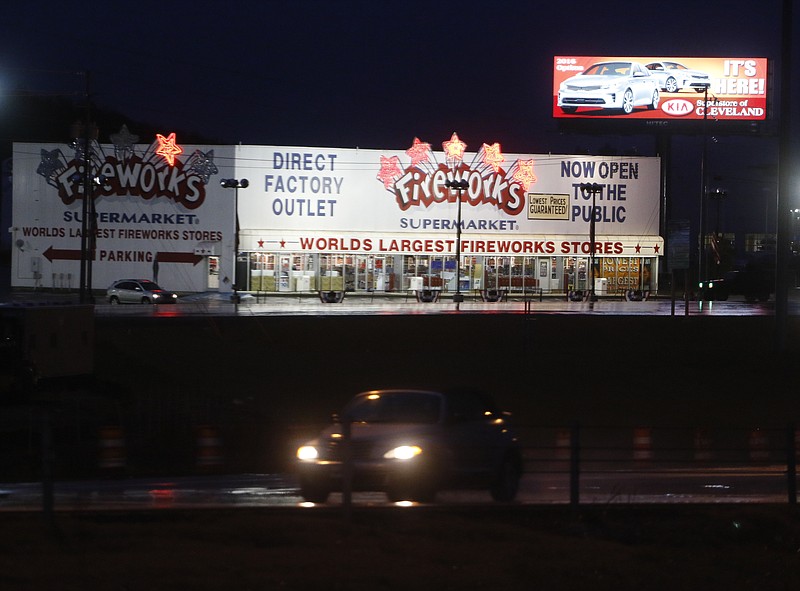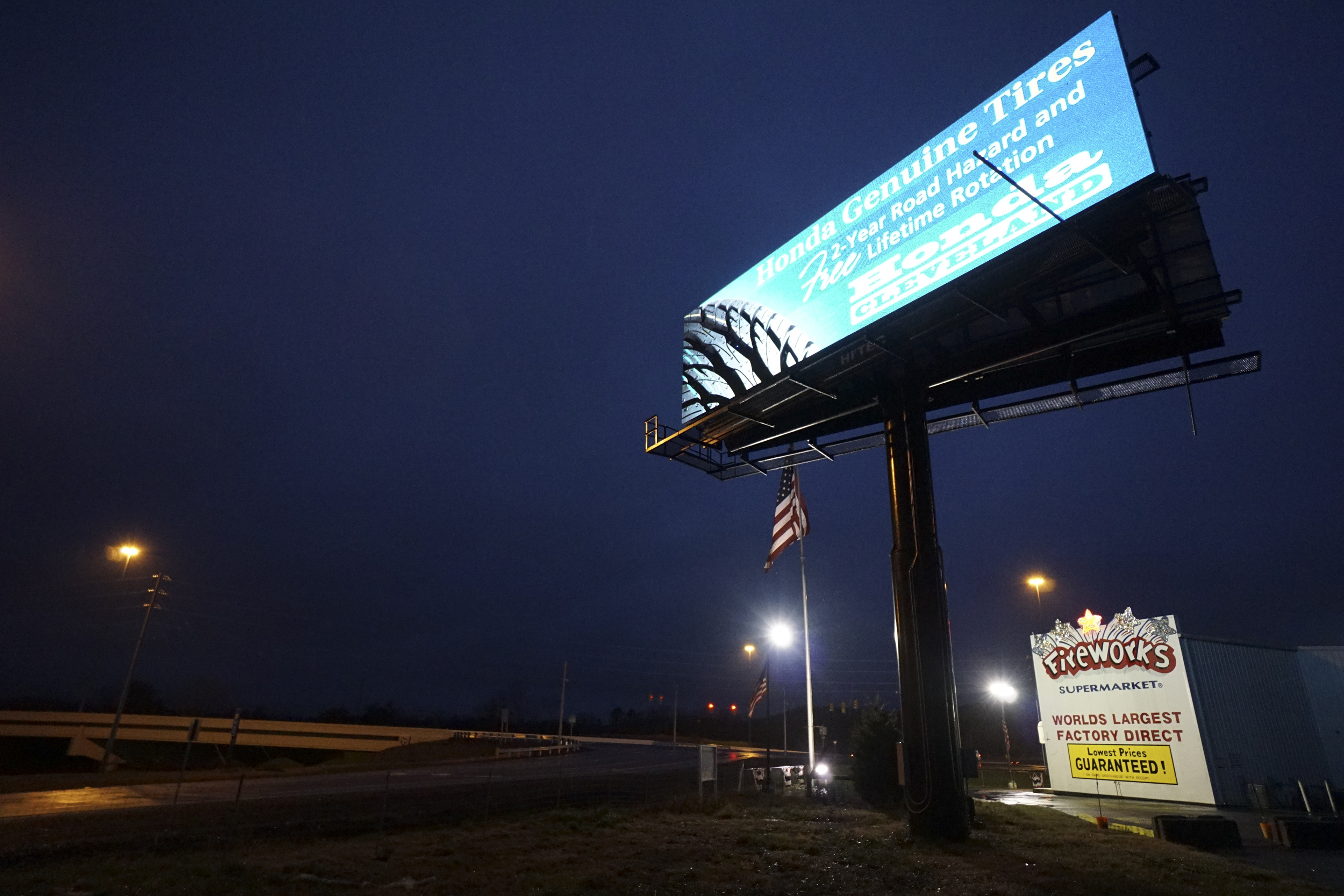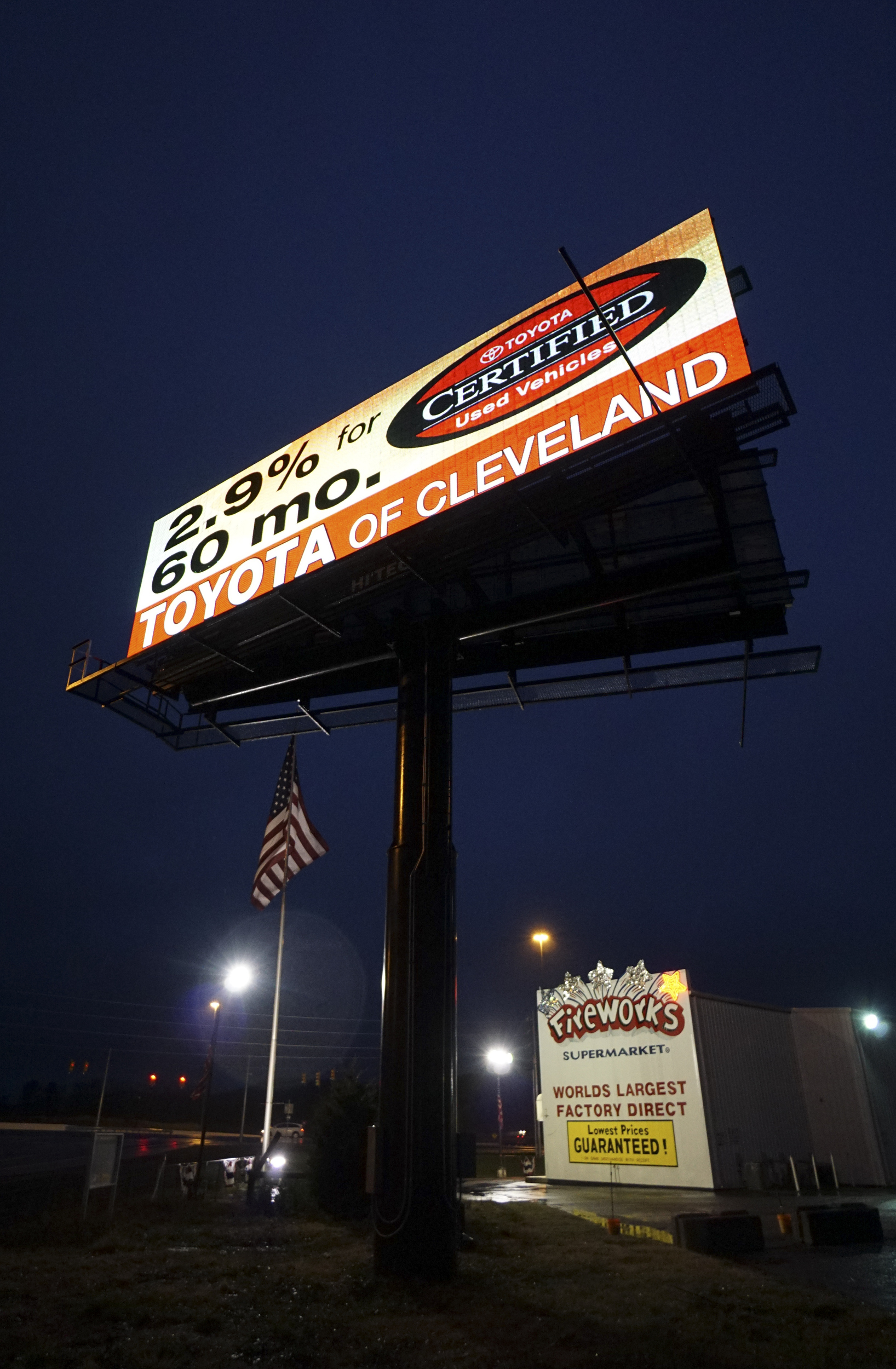What is brighter than the brightest star? More visible than any streetlight?
Try the digital billboard at Exit 25 on Interstate 75 in Cleveland, Tenn. Or perhaps the one on Dayton Boulevard in Red Bank. Or maybe the one on South Broad Street in Chattanooga.
The billboards are popping up all over the metro area, and some drivers - and city officials - are complaining.
At least one local town has decided to do something about it. East Ridge's town council may vote at its meeting Thursday to ban the signs - both the large billboards and smaller digital signs - for several months until it figures out how to deal with them.
"We don't want anybody driving by a sign in the rain at night and it blinds you," East Ridge Mayor Brent Lambert said.
The main concern is that the signs are too distracting to motorists.
In a sense, that's the goal of any sign - the point is to get your attention - but traffic engineers worry that brightly lit signs that flash or suddenly change their images take things too far.
"We've had some issues where a bright LED sign was in an intersection and it was blinding us when we looked to the left to the point that we couldn't see the traffic that was approaching," East Ridge Fire Chief Mike Williams told the council at its agenda meeting last week.
"It's dangerous when a billboard blinds you," said Tennessee Department of Transportation spokeswoman Jennifer Flynn, "particularly on the interstate."
It is only in recent years that the cost of video screens has dropped to the point where digital signs and billboards are affordable. Now, a full-sized digital billboard with two screens, one facing each direction, will cost about $200,000, plus another $65,000 for the support structure, according to Dave Westberg, publisher of billboard insider.com, which covers the billboard industry. That's down from $500,000-$800,000 just a few years ago.
The new signs offer several advantages over traditional signs, Westberg said, in that they can include moving images, they can display several different messages in rotation, and those messages can be tailored to the time of day, so a restaurant can promote its breakfast menu in the morning and dinner specials during rush hour. Plus they allow multiple advertisers on the same board.
"A digital billboard allows you to achieve six to eight times the revenue of a traditional billboard," Westberg said. "And that is huge in a world where cities don't want new billboards."
There is wide variation in how different states and towns regulate them.
Most states, including Tennessee, have a rule that says any sign that is overly distracting can be banned.
Tennessee's statute reads, "Outdoor signs of such intensity or brilliance as to cause glare or to impair vision of the driver of any motor vehicle, or which otherwise interferes with any driver's operation of a motor vehicle, are prohibited."
Other states take things further.
Some bar "sequential" ads on digital signs, similar to the legendary Burma Shave roadside signs, where several successive images combine to convey the advertising message (e.g., "Don't lose Your head To gain a minute You need your head Your brains are in it Burma Shave"). The fear is that drivers would be too distracted waiting for the remainder of the ad to appear.
The minimum distance between signs also varies, with Tennessee requiring 2,000 feet while Georgia requires 5,000, almost a mile.
Some local jurisdictions have much tighter sign restrictions, so the bright LED light question has not been addressed. Lookout Mountain bars almost all signs, while Signal Mountain bars illuminated signs, although it has allowed a few exceptions.
In Chattanooga, City Councilman Chris Anderson has been working on a revision of the city's sign ordinance, but said he is several weeks away from having a draft ready to be discussed. The city now requires images on LED-based digital signs must remain static for 10 seconds. The city also requires digital signs to operate at no more than 90 percent of their maximum intensity during the daytime and dim to 30 percent of capacity at night.
East Ridge already has a detailed sign ordinance, 120 pages that bans several types of ads.
No pennants or flags can be used, other than the U.S. or a state or city flag. Words such as "STOP!" or "TURN HERE!" can't be used where they might confuse motorists by appearing to be traffic signals.
And in case you were wondering, no animals can be used in an ad, so any barbecue joint planning on pasturing a few head of cattle out front to advertise their "Fresh Beef" can forget about it.
The ordinance does bar flashing lights, but it doesn't specifically deal with a sign's brightness.
That's what East Ridge officials say they hope to fix.
"Let's make sure people aren't distracted while driving," Mayor Lambert said.
Contact staff writer Steve Johnson at sjohnson@timesfreepress.com, 423-757-6673, on Twitter @stevejohnsonTFP, or on Facebook, facebook.com/noogahealth.


